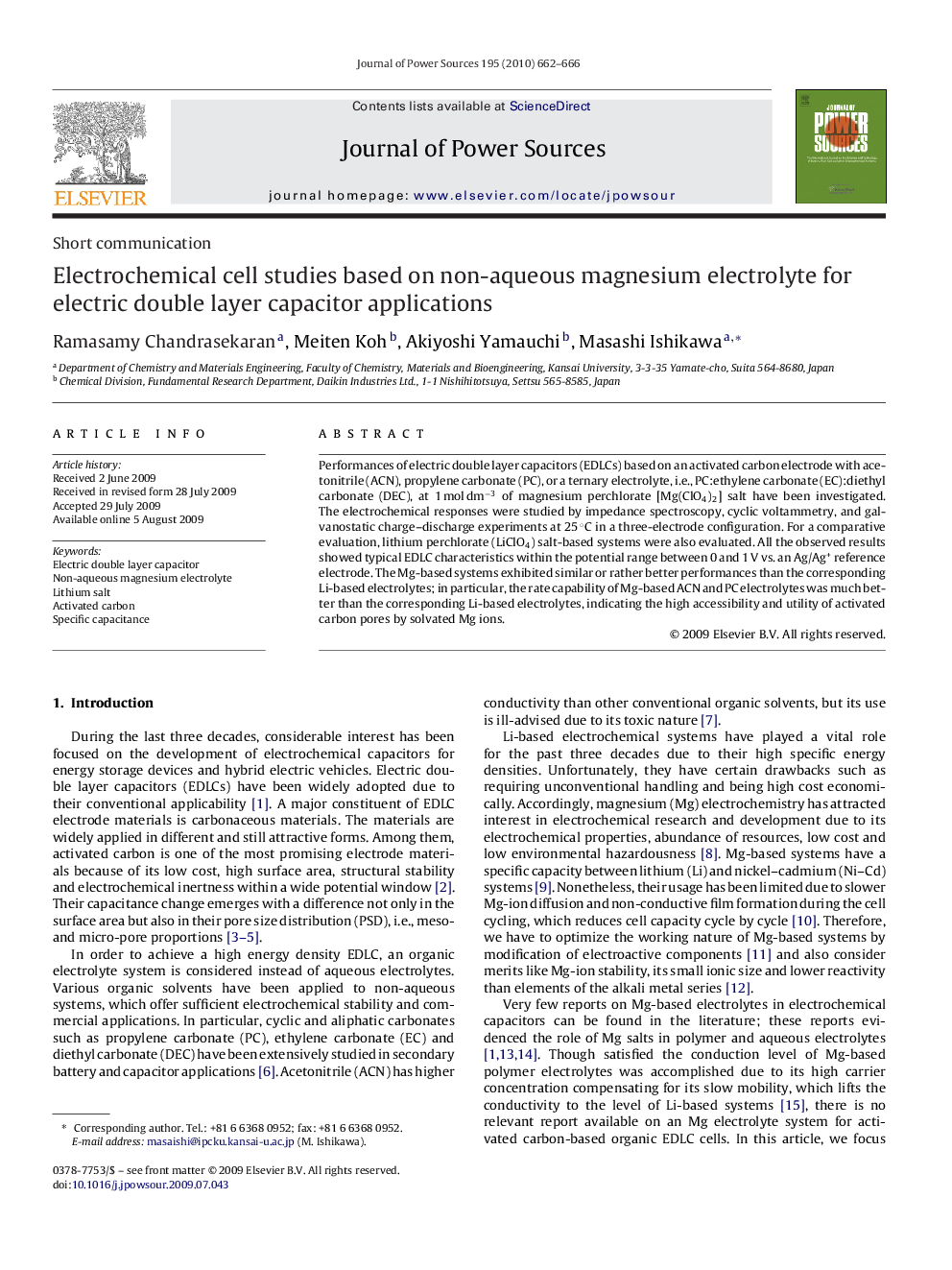| Article ID | Journal | Published Year | Pages | File Type |
|---|---|---|---|---|
| 1293919 | Journal of Power Sources | 2010 | 5 Pages |
Performances of electric double layer capacitors (EDLCs) based on an activated carbon electrode with acetonitrile (ACN), propylene carbonate (PC), or a ternary electrolyte, i.e., PC:ethylene carbonate (EC):diethyl carbonate (DEC), at 1 mol dm−3 of magnesium perchlorate [Mg(ClO4)2] salt have been investigated. The electrochemical responses were studied by impedance spectroscopy, cyclic voltammetry, and galvanostatic charge–discharge experiments at 25 °C in a three-electrode configuration. For a comparative evaluation, lithium perchlorate (LiClO4) salt-based systems were also evaluated. All the observed results showed typical EDLC characteristics within the potential range between 0 and 1 V vs. an Ag/Ag+ reference electrode. The Mg-based systems exhibited similar or rather better performances than the corresponding Li-based electrolytes; in particular, the rate capability of Mg-based ACN and PC electrolytes was much better than the corresponding Li-based electrolytes, indicating the high accessibility and utility of activated carbon pores by solvated Mg ions.
